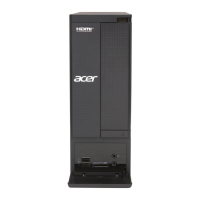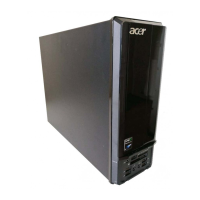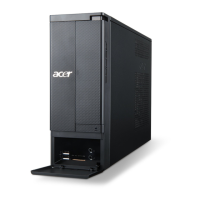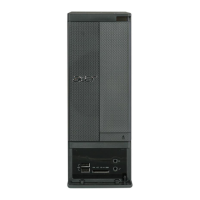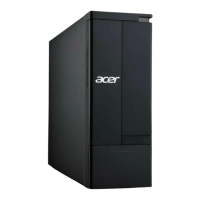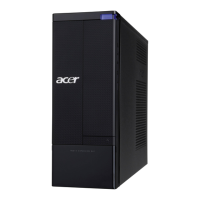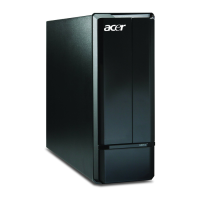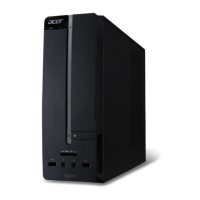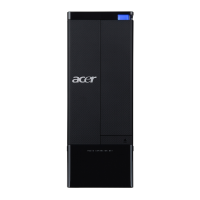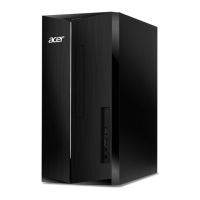Do you have a question about the Acer Aspire X1430 and is the answer not in the manual?
Details the computer's core components, including OS support, processor, memory, and connectivity options.
Covers chassis dimensions, weight, operating temperature, and humidity requirements for the system.
Illustrates the front and rear views of the computer, identifying external ports and indicators.
Explains the purpose, conditions for use, and basic functionality of the CMOS Setup Utility.
Details how to enter, navigate, and use the BIOS setup interface and its main menu categories.
Describes key settings within Main, Advanced, Security, Boot, and Power menus for system configuration.
Lists necessary tools and outlines pre-disassembly steps for safe hardware maintenance.
Step-by-step instructions for removing internal components like side panels, drives, and modules.
Step-by-step instructions for reinstalling internal components, ensuring correct placement and connections.
Guides users through steps to diagnose system failures, including external and internal inspections.
Covers system checks, internal inspection, and checkpoint analysis for troubleshooting.
Explains POST errors, beep codes, BIOS recovery, updates, and CMOS clearing procedures.
Presents block diagrams, mainboard layouts, and definitions for internal headers and connectors.
Details how to connect optional devices, case components, and manage jumper settings for system configuration.
Provides exploded diagrams and a comprehensive list of part numbers for FRUs.
Details technical specifications for the Processor, Chipset, BIOS, Memory, and Hard Disk Drive.
Lists specifications for Optical Drives, Card Readers, Ethernet, Audio, Power Supply, and Power Management.
| Graphics | AMD Radeon HD 7310 |
|---|---|
| Operating System | Windows 8; Windows 7 Home Premium 64-bit |
| Memory | 2GB DDR3 |
| Hard Drive | 500GB HDD |
| Audio | High-definition audio support |
| Networking | 10/100/1000 Mbps Ethernet |
| Ports | USB 2.0, HDMI, VGA, Ethernet, audio in/out |
| RAM | Up to 8 GB DDR3 |
| Storage | Up to 2 TB HDD |
| USB Ports | USB 2.0 |
| Ethernet | Gigabit Ethernet |
| Wireless | 802.11b/g/n |
| Optical Drive | DVD-Super Multi DL |
